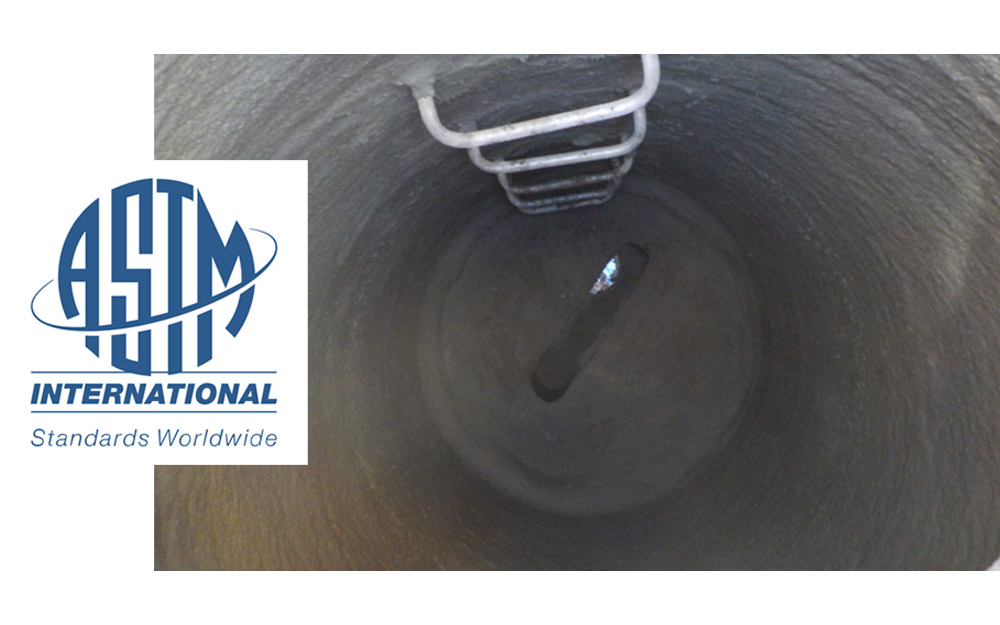What is ASTM International?

Nearly every municipal project specification contains a reference section detailing a variety of ASTM standards that are critical to the material performance, installation performance, and quality control of most products and projects.
To many in the engineering field, this list of references can be somewhat confusing and require detailed understanding to make sure one is using the correct standard for the product or process that is being specified.
ASTM International, formerly known as the American Society for Testing and Materials, is a global leader in developing voluntary consensus standards used by individuals, companies, and other institutions around the world.
How is an ASTM Standard Developed?
ASTM is made up of over 30,000 volunteer members from more than 140 countries. The organization meets the criteria for international standards developing organizations as set forth by the World Trade Organization.
For those who are not members, it is informative to understand how an ASTM Standard is developed. There are six types of standards, but in NASSCO applicable markets the three most important are: Test Methods, Specifications, and Guide.
Types of ASTM Standards
- Test Method Standards are defined procedures that generate test results. Examples include identification, measurement, and evaluation of one or more qualities, characteristics, or properties.
- Specification Standards are requirements that must be met by a material, product, system, or service. The specification identifies test methods for determining whether each requirement is met.
- Guide Standards are collections of information or series of options that do not recommend specific courses of action. They generally inform people of the knowledge and approaches being taken in given subject areas.
ASTM Standards in Municipal Projects
For an ASTM Standard to be adopted it requires a unanimous positive vote (i.e., all negative votes must be addressed or voted down by a separate ballot) by both a sub and main committee, with at least 60% of the committee returning ballots (90% must be positive, 10% can be abstaining).
In the NASSCO Manhole Rehabilitation Guideline Specification an example of the standards referenced include:
- ASTM F2551 – Standard Practice for Installing a Protective Cementitious Liner System in Sanitary Sewer Manholes
- ASTM C109 – Standard Method for Compressive Strength of Hydraulic Cement Mortars (Cubes)
- ASTM C267 – Standard Test Methods for Chemical Resistance of Mortars
- ASTM D790 – Flexural Properties of Unreinforced and Reinforced Plastics
Specifications that include these standards require a basic understanding of the information contained therein:
ASTM F2551 is a “Standard Specification” which lists most of the requirements that would need to be included in a manhole rehabilitation specification. This includes sections and details on Materials, Surface Preparation, Cleaning, Installation, Curing, and QC Sampling. On a municipal specification, one can reference and include the specification accepting all the requirements contained therein. It will simplify and provide a common specification based on industry-accepted practices.
Test Method Standards like C109, C267, and D790 can require more work by the specifier. C109 requires a listed number of tests, timing, and curing process as well as specifying the minimum strength accepted by the engineer. The same goes for standards like D790 where the specifier must understand how the plastic was cured to understand the test results properly.
Not all standards are the same and C267 is a great example. It specifies test methods for the chemical resistance of mortars but only defines the outline of how to test.
But just specifying the standard will not result in consistent testing between manufacturers. There are three methods (A-C) in the standard, all of which will give greatly varying values. The method is generically for cement, falling under the jurisdiction of Sub Committee D01.46 on Industrial Protective Coatings. The method isn’t specifically designed for sewer chemicals, and in fact, doesn’t provide any standard chemical test and generally treats all chemicals the same. Because the standard doesn’t provide guidance on the specific pH or the concentration of a chemical to be used (e.g., sulfuric acid) many manufacturers have performed the test but at different concentration levels. This multiplicity can create confusion for the specifier.
Getting Involved with ASTM
In any specification, you should always state that the most recent version should be used which can always be checked on their website.
Including ASTM standards in your specification is critical to getting the project installed as one wants but understanding the details in the standard is critical to making sure the design engineer doesn’t get surprised when the outcome doesn’t meet the expectation. If one wants to get involved in the process, the two most relevant committees for underground utilities are F17 (plastic pipes) and F36 (Technology and Underground Utilities).